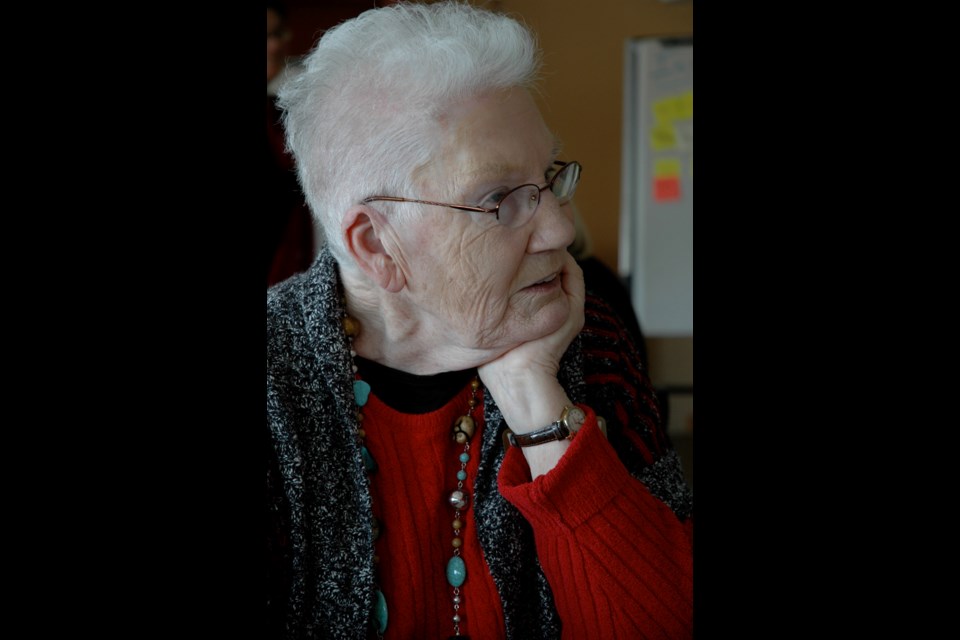Almost half of the Sunshine Coast’s population is 55 or older, according to 2013 B.C. population statistics. What this means to the adults in this demographic and the rest of the Coast was the subject of a Taking Action Day organized by the Community Resource Centre (CRC) on April 28.
The event drew together a number of stakeholders ranging from the new deputy director of development service for the District of Sechelt, Tom Lancaster, to local seniors and organizations that serve them.
In her opening remarks Anne Titcomb, CRC director, said we are already behind in planning for the Grey Tsunami, the term coined to describe the burgeoning seniors population.
“When the community research was done to write the [grant for the initial study of women’s economic sustainability on the Coast] the Food Bank told us the biggest rise in individuals at the Food Bank was women over 60. We know that is only the tip of the iceberg of seniors’ needs on the Coast,” Titcomb said.
Local senior Jill Hightower agrees with that assessment, but deplores the use of the term ‘seniors’.
“I’m an older adult. We’re feisty people with lots of time to advocate for the different needs depending on our age,” Hightower said.
Only Parksville on Vancouver Island has a higher per capita population of seniors. However, other areas close by, including North and West Vancouver, have similar challenges. Robyn McGuinness of the Lion’s View Planning Society also did a presentation on the 20-year experience with the area’s seniors’ community planning table.
Similarities exist between the North Shore and the Sunshine Coast both in terrain, transportation issues and need for services. But one of the biggest differences is in approach to meeting needs.
Rather than a piecemeal approach, the North Shore Seniors’ Planning Table works with people throughout the region to create a common place from which to act as a collective voice for older adults on the North Shore.
“We are desperately in need of a Seniors’ Planning Table, actually overdue given the Grey Tsunami that has been with us for a while now. There is a need for coordination,” Titcomb said.
She also stated the need for the local governments on the Coast to support the coordination financially.
As representative of the biggest population centre on the Coast, Lancaster’s presentation centred on the role of Sechelt in creating a healthy community. The District’s objectives include supporting a continuum of community services catering to all ages and abilities and fostering civic involvement, participation and volunteerism. In an area that has nearly double the population of seniors as the rest of B.C., that presents special challenges. Sechelt policies designed to achieve those criteria include housing directives that encourage interaction between different age groups and support for groups advocating to senior levels of government for the establishment of needed services and programs.
The CRC event included an opportunity for the 50 participants to identify gaps in service and communication on the Coast and to talk about the challenges in meeting the needs expressed. Common themes such as medical care, housing and transportation were explored and will be the subjects of a Coast Reporter series in the coming months.



